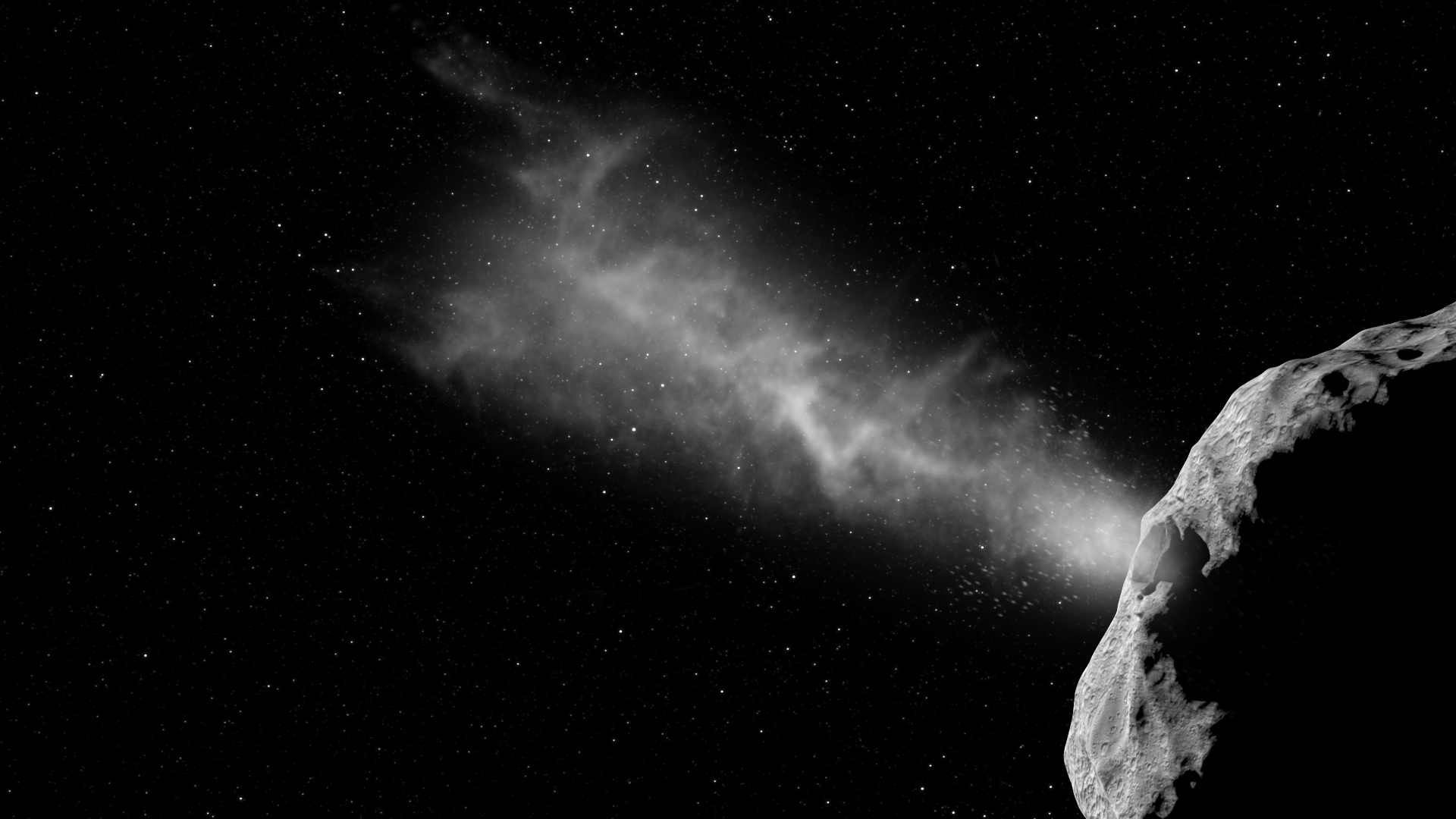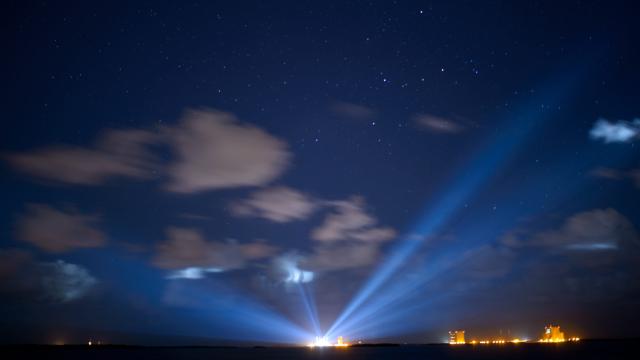If an enormous asteroid struck the Earth, humanity would be, in a word, screwed. To prevent that from happening, and hopefully inspire a sweet Armageddon reboot in the process, a team of scientists is exploring the possibility of nuking asteroids out of the sky. Yes, you heard that correctly.
Image: NASA
Nuking asteroids to prevent the apocalypse sounds like science fiction, but among scientists working in planetary defence — a field concerned with safeguarding the Earth against deadly bolides — it’s a delightfully legitimate idea. At a press conference at the American Geophysical Union meeting this week, researchers from Los Alamos National Laboratory and NASA’s Goddard Spaceflight Center spoke about the best approaches for preventing a sequel to the KT-extinction. It turns out there are really only two good options: Kinetic impactors, which jostle Earth-bound comets and asteroids onto more benign orbits, and explosives, which blow them to smithereens.
There are 15,000 known near Earth objects that could, at some point in the future, pose a threat to our planet. Planetary defence, the concept of protecting ourselves against these cosmic interlopers, has been around for decades, but it’s gained considerable momentum this past year, with the launching of NASA’s Planetary Defence Coordination Office.
That office, whose mission is to ensure the detection of “potentially hazardous” objects (greater than 30-50m across) within 0.05 AU of the Earth, already has several exciting projects in the works. These include OSIRIS-Rex, an asteroid sample return mission that launched in September, and the Asteroid Redirect Mission (AIM), which seeks to visit a near-Earth object, collect a multi-tonne boulder from its surface and tractor beam that bad boy back to a stable orbit around the Moon.
Missions like OSIRIS-Rex and AIM are the first steps toward understanding the threat posed by near-Earth objects. Responding to a deadly space rock in a timely manner, however, is another challenge entirely.
“It is really imperative that we reduce our reaction time,” said Joseph Nuth of NASA’s Goddard Spaceflight Center, noting that the Oort cloud comet C/2013 A1 passed “within spitting distance of Mars” just 22 months after its discovery in January 2013. If astronomers were to spot an object like C/2013 A1 on a collision course with Earth, there’s “not a hell of a lot we can do about it,” Nuth said.
Nuth envisions a well-defended planet Earth outfitted with “observer spacecraft” which, like watchmen, keep their eyes peeled for dangerous near Earth objects. If the observers spot something, they relay all the details they can gather to “interceptor spacecraft” which are kept in storage planet-side.

Concept art for the European Space Agency’s Asteroid Impact Mission. Image: ESA — ScienceOffice.org
“An observer can document the asteroid’s spin axis, shape, and orbit, so that we have the maximum probability of deflecting it from Earth,” Nuth said. Ideally, once an object with a high likelihood of impact has been identified, one or more interceptors will be launched within a year.
Catharine Plesko, a researcher at Los Alamos who uses supercomputers to model asteroid deflection scenarios, says that with decades to centuries of lead time, the more pacifistic kinetic impactor approach is preferred for asteroid deflection. But if our interceptor spacecraft are crunched for time and if their target object is very large, we may have to go nuclear.
“A kinetic impactor is basically a giant cannonball,” Plesko said. “Cannonball technology is very good, because you’re intercepting the object at a very high speed. But if you really need a lot of energy, a nuclear burst is the way to go.”
“It encompasses the largest amount of energy and the smallest mass,” added Robert Weaver of Los Alamos National Laboratory. Most of the energy generated in a nuclear explosion, Weaver says, comes in the form of X-rays, which heat up and vaporise the surface of nearby objects. In the case of a nuke detonating near an asteroid, this causes the rock to recoil in the opposite direction of the material being vaporised. “If it’s a really last minute thing, we can even disrupt the asteroid entirely,” Weaver added.
To be clear, there are no green-lit missions, at NASA or elsewhere, that involve strapping a bunch of nukes to a spacecraft. For now, the idea exists in supercomputers and the imaginations of scientists, although it was fleshed out a bit more concretely last year, with the first draft of a NASA mission proposal called Hypervelocity Asteroid Mitigation Mission for Emergency Response (HAMMER).
Plesko, Weaver, Nuth and their colleagues plan to continue refining HAMMER this year as they consider various aspects of the deflection problem, including how many nukes would be needed to head off asteroids or comets of different sizes. For these scientists, the important thing is to get a real conversation around planetary defence started sooner rather than later.
“Natural disasters happen all the time,” said Galen Gisler of Los Alamos National Laboratory. “This is one natural disaster we can see coming and prevent.”
